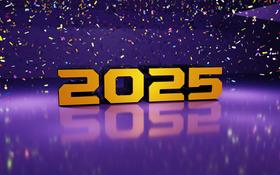For the 2025-26 school year, there are 3 public high schools serving 3,077 students in Great Falls, MT.
The top ranked public high schools in Great Falls, MT are C M Russell High School and Great Falls High School. Overall testing rank is based on a school's combined math and reading proficiency test score ranking.
Great Falls, MT public high schools have an average math proficiency score of 27% (versus the Montana public high school average of 32%), and reading proficiency score of 41% (versus the 43% statewide average). High schools in Great Falls have an average ranking of 3/10, which is in the bottom 50% of Montana public high schools.
Great Falls, MT public high school have a Graduation Rate of 83%, which is equal to the Montana average of 83%.
The school with highest graduation rate is C M Russell High School, with 90% graduation rate. Read more about public school graduation rate statistics in Montana or national school graduation rate statistics.
Minority enrollment is 26% of the student body (majority American Indian), which is more than the Montana public high school average of 23% (majority American Indian).
Best Public High Schools in Great Falls, MT (2025-26)
School
(Math and Reading Proficiency)
(Math and Reading Proficiency)
Location
Quick Facts
Rank: #11.
C M Russell High School
(Math: 32% | Reading: 45%)
Rank:
Rank:
4/
Bottom 50%10
228 17th Avenue Nw
Great Falls, MT 59403
(406) 268-6100
Great Falls, MT 59403
(406) 268-6100
Gr: 9-12 | 1,452 student Student-teacher ratio: 17:1 Minority enrollment: 21%
Rank: #22.
Great Falls High School
(Math: 22% | Reading: 37%)
Rank:
Rank:
2/
Bottom 50%10
1900 2nd Avenue South
Great Falls, MT 59403
(406) 268-6250
Great Falls, MT 59403
(406) 268-6250
Gr: 9-12 | 1,612 student Student-teacher ratio: 14:1 Minority enrollment: 30%
Rank: n/an/a
Mt Sch For Deaf & Blnd High School
Special Education School
3911 Central Ave
Great Falls, MT 59405
(406) 771-6017
Great Falls, MT 59405
(406) 771-6017
Gr: 9-12 | 13 students Student-teacher ratio: 1:1 Minority enrollment: 31%
Great Falls, Montana Public Schools (Closed)
School
Location
Quick Facts
1508 Millegan Road
Great Falls, MT 59405
(406) 866-3381
Great Falls, MT 59405
(406) 866-3381
Gr: PK-6 | 7 students Student-teacher ratio: 7:1
Po Box 2429
Great Falls, MT 59403
(406) 268-6600
Great Falls, MT 59403
(406) 268-6600
Gr: 6-8 | 935 students Student-teacher ratio: 16:1 Minority enrollment: 15%
2501 2nd Avenue North
Great Falls, MT 59403
(406) 268-7045
Great Falls, MT 59403
(406) 268-7045
Gr: PK-6 | 312 students Student-teacher ratio: 15:1 Minority enrollment: 25%
<麻豆果冻传媒 class='so-dt-title' id='faq'>Frequently Asked Questions
What are the top ranked public high schools in Great Falls, MT?
The top ranked public high schools in Great Falls, MT include C M Russell High School and Great Falls High School.
How many public high schools are located in Great Falls?
3 public high schools are located in Great Falls.
What is the racial composition of students in Great Falls?
Great Falls public high schools minority enrollment is 26% of the student body (majority American Indian), which is more than the Montana public high schools average of 23% (majority American Indian).
Which public high schools in Great Falls are often viewed compared to one another?
Popular comparisons of public high schools in Great Falls include: C M Russell High School vs. Great Falls High School, Great Falls High School vs. C M Russell High School
麻豆果冻传媒 Articles

Texas Schools Enrollment Trends & Policy in 2025
Latest data and policy changes on Texas public school enrollment growth, funding, and virtual education in 2025.

Financial Aid & Hidden Costs in Public Schools
Learn about financial aid and hidden costs in public schools. Discover what parents should budget for beyond tuition-free education.

NYC Schools Still Most Segregated in 2025
Despite reforms, New York City schools remain the most segregated in the U.S. in 2025. Here鈥檚 what parents and educators need to know.
